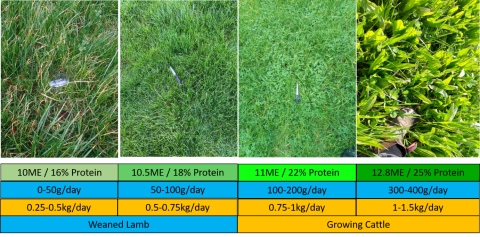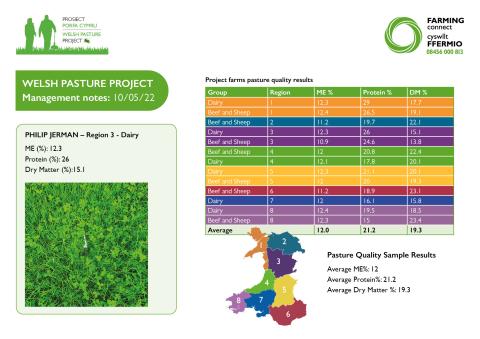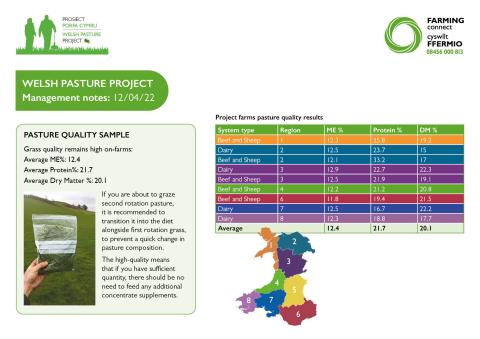Pasture Quality
As part of the project, 16 beef, sheep and/or dairy farmers from different regions of Wales will be taking monthly pasture quality samples, alongside images of the pasture to provide a benchmark for others to determine the potential pasture quality on their farm.
Whilst the sward stick or plate meter is measuring quantity (how much), your eyes should be assessing the quality of pasture, which will determine which stock class is best suited to graze which field to meet their performance targets.
Quality, Quality, Quality!
Often in the UK, we can be too focused on quantity, and not quality. The three main components of quality are:
- Energy - MJME
- Protein - % - (not normally a limiting factor)
- Digestibility - NDF (neutral detergent fibre)
Protein is normally over 16%, and therefore, not limiting for lactating or growing animals (the focus is on pasture energy and digestibility). Consistently matching the right stock with the right quantity and quality will achieve the highest level of performance and profitability on-farm.
(Image source: Precision Grazing Ltd)
Assessing Pasture
As a rule of thumb, the more green leaf, clover or herbs, the higher the quality of pasture. When walking pastures, you should ask yourself: how much dead material is present? Have pastures gone to head? How much clover and other herbs are within the pasture?
Pasture quality will depend on many factors, including:
- Geographic location
- Environmental conditions (temperature, humidity, precipitation)
- Type of grass and/or legume
- Grazing management
Like using a plate meter to "train your eye", it can be helpful to send fresh pasture samples off to a lab for analysis; take a photo of the pasture before you send it so that you have a visual reminder to look back at it later in the season.



